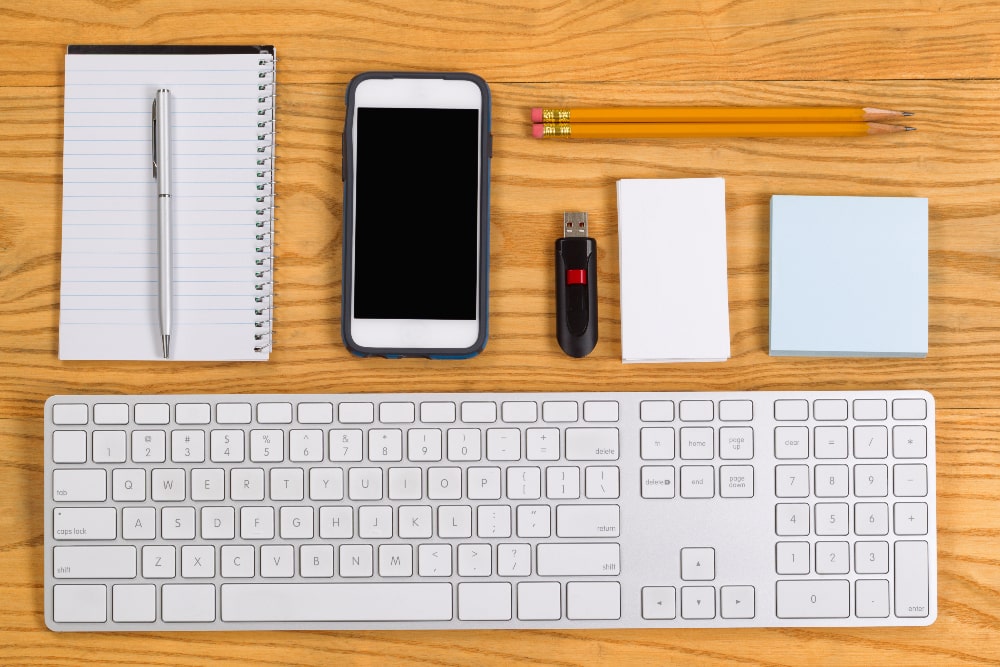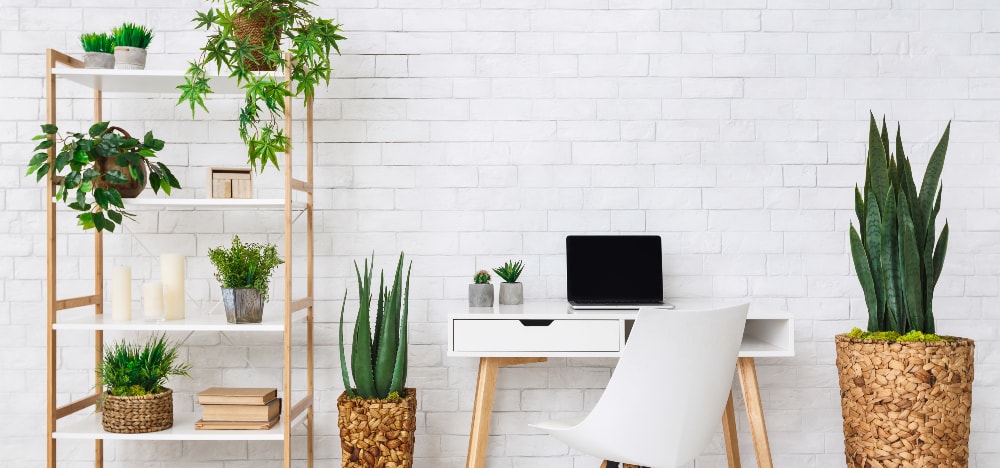The pandemic has been something of a catalyst in changing the way we all work. Even in these post pandemic days, many people are still, deliberately, working from home at least a couple of days a week.
While there are many benefits to working remotely, such as increased flexibility and comfort, it can be challenging to stay focused and productive in a home environment. Below we will show you some practical tips for creating a productive work environment at home so that you can make the most out of your home office or work space.
Tips For Creating A Productive Work Environment At Home
Designate A Specific Workspace
One of the most important things you can do to create a productive work environment is to designate a specific workspace. It should be a place where you can focus and minimize distractions.
Ideally, it should be a separate room, but if that’s not possible, it should be a specific area in your home. When you sit down at your designated workspace, it should signal to your brain that it’s time to work.
You’ll find plenty of tips here about setting up your own home office space.
Keep Your Workspace Organized
Organization is key to creating an effective workspace, whether at home or in an office. A cluttered workspace can be distracting and lead to a decrease in productivity.
Therefore, it’s essential to keep your workspace organized. Make sure your desk is clean, and you have a place for everything. You can use organizers, trays, or filing cabinets to keep your papers and supplies in order. Additionally, keeping your workspace tidy can help reduce stress and anxiety.
We’ve got all of the best tips and ideas to help you organize your home office right here.

Invest In Ergonomic Equipment
When you’re working from home, you’re likely to be spending a lot of time sitting in front of a computer. This can lead to discomfort and pain if you’re not using ergonomic equipment.
For this reason, it’s essential to invest in an ergonomic chair, keyboard, and mouse. These items will help you maintain good posture and prevent strains and injuries. You’ll also want to ensure that your computer is set up in the best possible way on your desk to make sure you can sit comfortably while working.
Let In Natural Light
Natural light has been proven to increase productivity and reduce stress. Therefore, it’s essential to let in as much natural light as possible in your workspace. Not only that, but natural light will make it easier to see your work and help to prevent eye strain.
If you don’t have access to natural light, you can use full-spectrum light bulbs to simulate natural light.
Add Plants
Not only do plants look good and help to brighten up any space, they also help to improve air quality and reduce stress, which can lead to increased productivity.
It’s a no-brainer to consider adding plants to your workspace. You can choose low-maintenance plants like succulents or small potted plants to add some greenery to your workspace. Taking care of the plants (with a little water now and then) can also be a nice routine or ritual to add to your work day.

Minimize Distractions
Distractions can derail your productivity and lead to wasted time. Therefore, it’s obviously essential to minimize distractions as much as possible. Turn off your phone notifications, close unnecessary tabs on your computer, and avoid social media during work hours.
If there are young children at home, save grueling/high concentration tasks for naptime or for when there is someone else there to take care of the children. Additionally, if necessary, you might also like to use noise-canceling headphones to block out noise and help you focus.
Take Breaks
Taking breaks is essential to maintaining productivity and preventing burnout. Make sure to take regular breaks throughout the day.
You can take a short walk, stretch, or meditate to help you recharge and refocus, or you can even take advantage of the fact that you’re working from home and use your short breaks to complete a household chore like putting on a load of laundry or unpacking the dishwasher.
Taking breaks can help prevent eye strain and headaches that can occur from staring at a computer screen for an extended period, so don’t see them as a waste of time but rather as a necessary part of your day.
Establish A Routine
Finally, establishing a routine is crucial to maintaining productivity when working from home. Wake up at the same time every day, get dressed, and start work at the same time.
Additionally, make sure to take breaks and end your workday at a specific time. Establishing a routine can help you maintain a sense of normalcy and structure, which can be helpful when working from home.

Once you’ve got a few weeks of working from home under your belt, you’ll have established a rhythm that works for you and your family.
Creating a productive work environment at home requires some effort, but it’s essential to stay focused and maintain productivity. Designate a specific workspace, keep it organized, invest in ergonomic equipment, let in natural light, add plants, minimize distractions, take breaks, and establish a routine.
By following these tips, you’ll be able to create a productive work environment that will help you stay focused and accomplish your goals.
Working from home just got easier!











